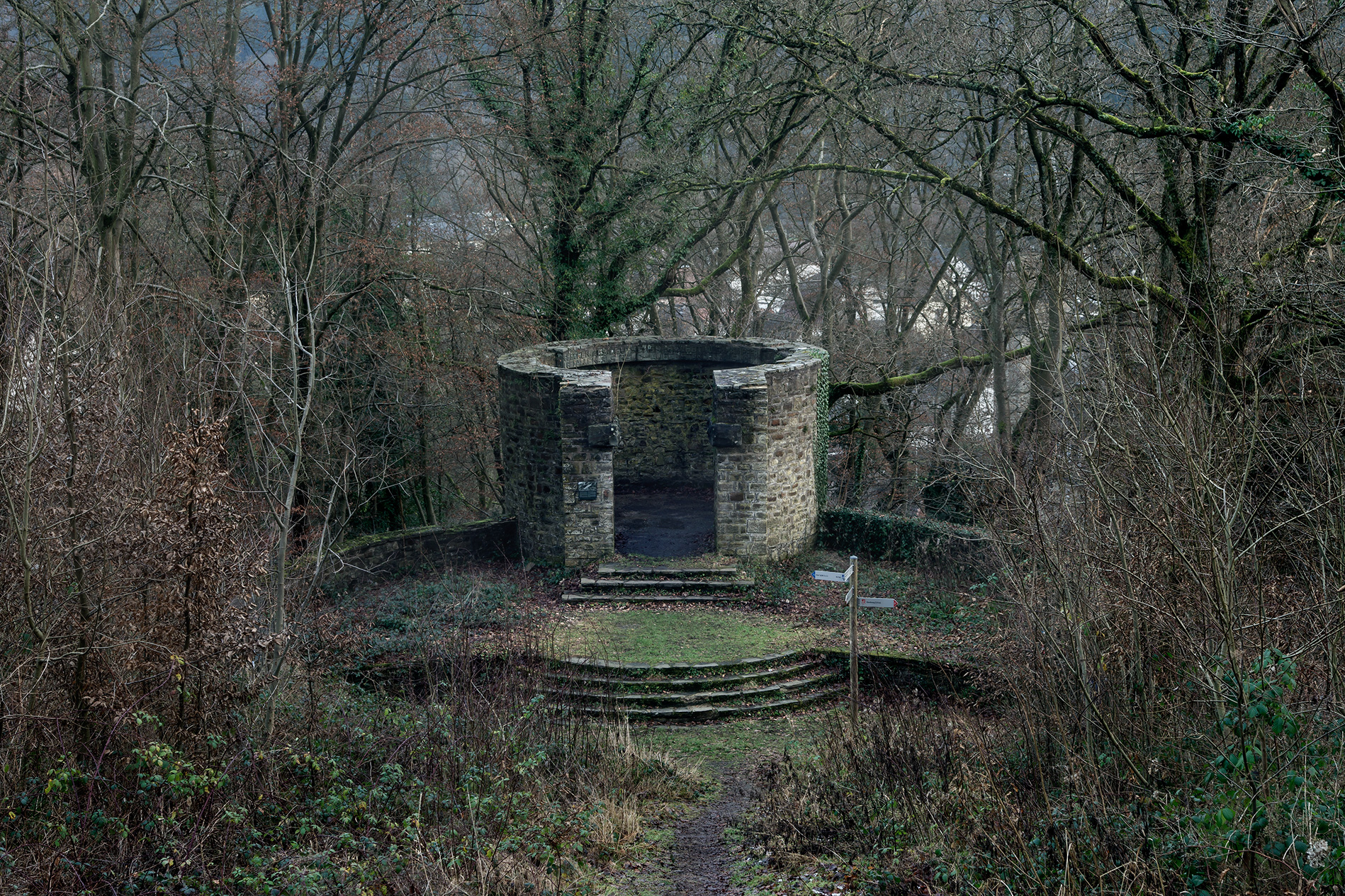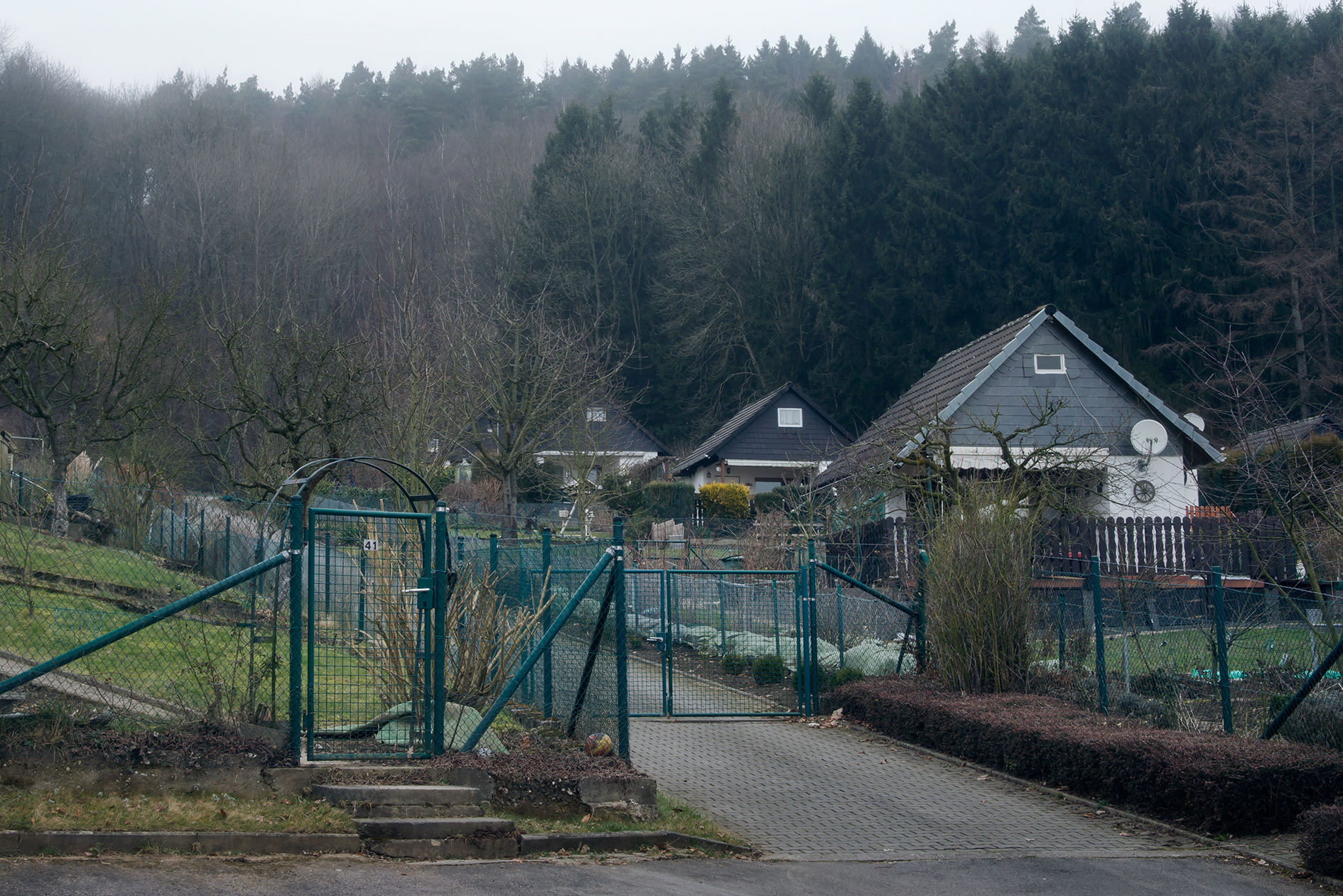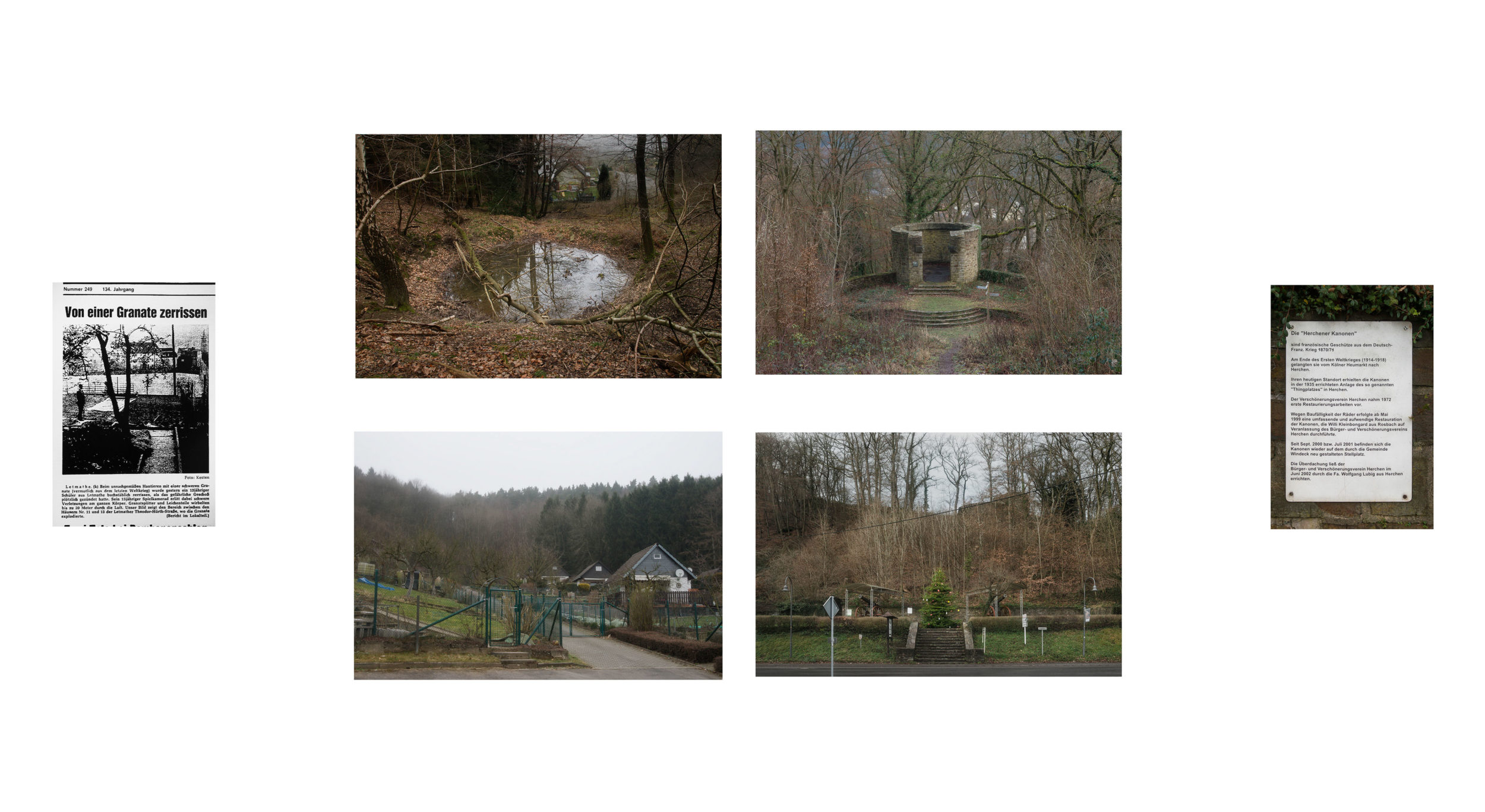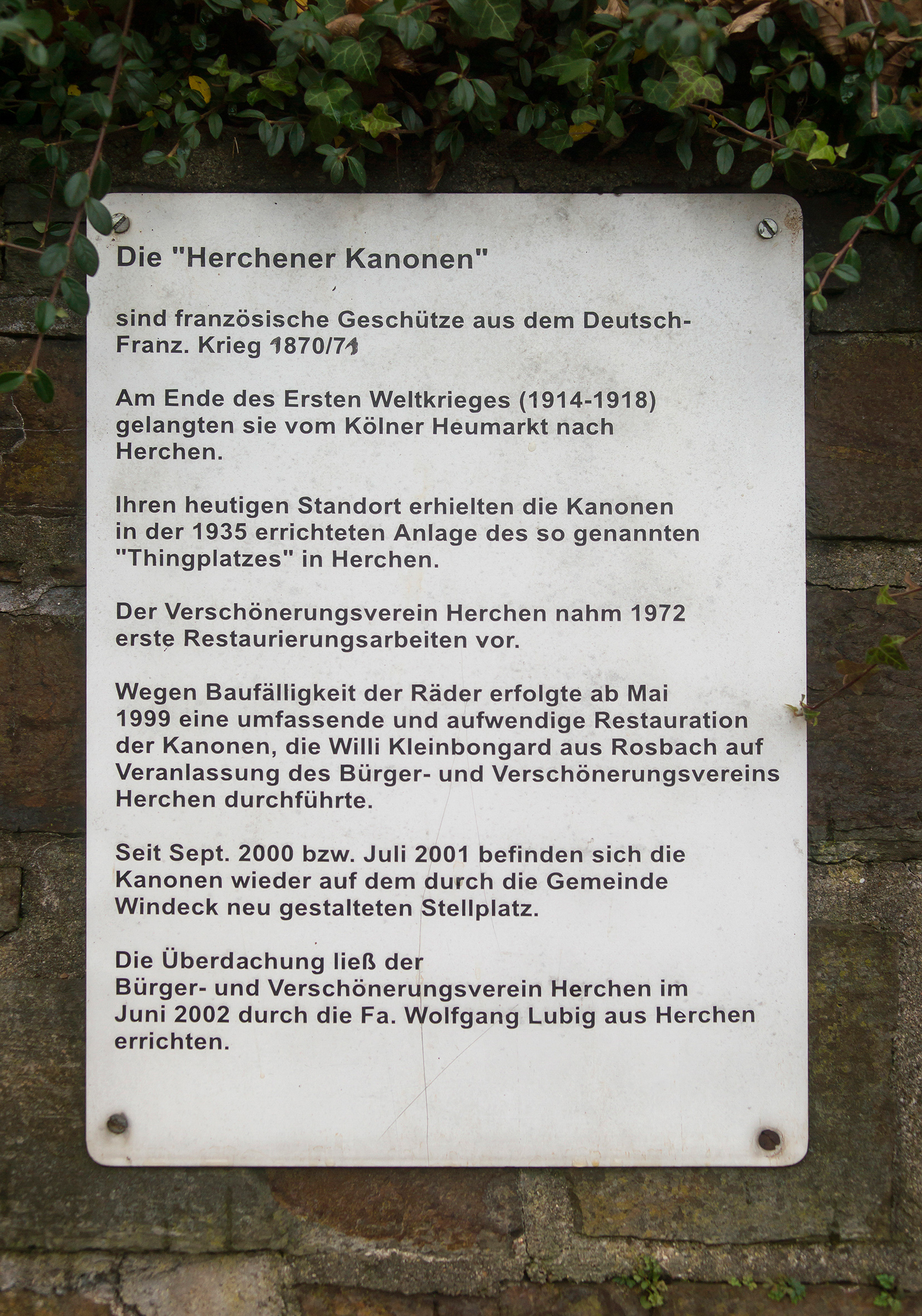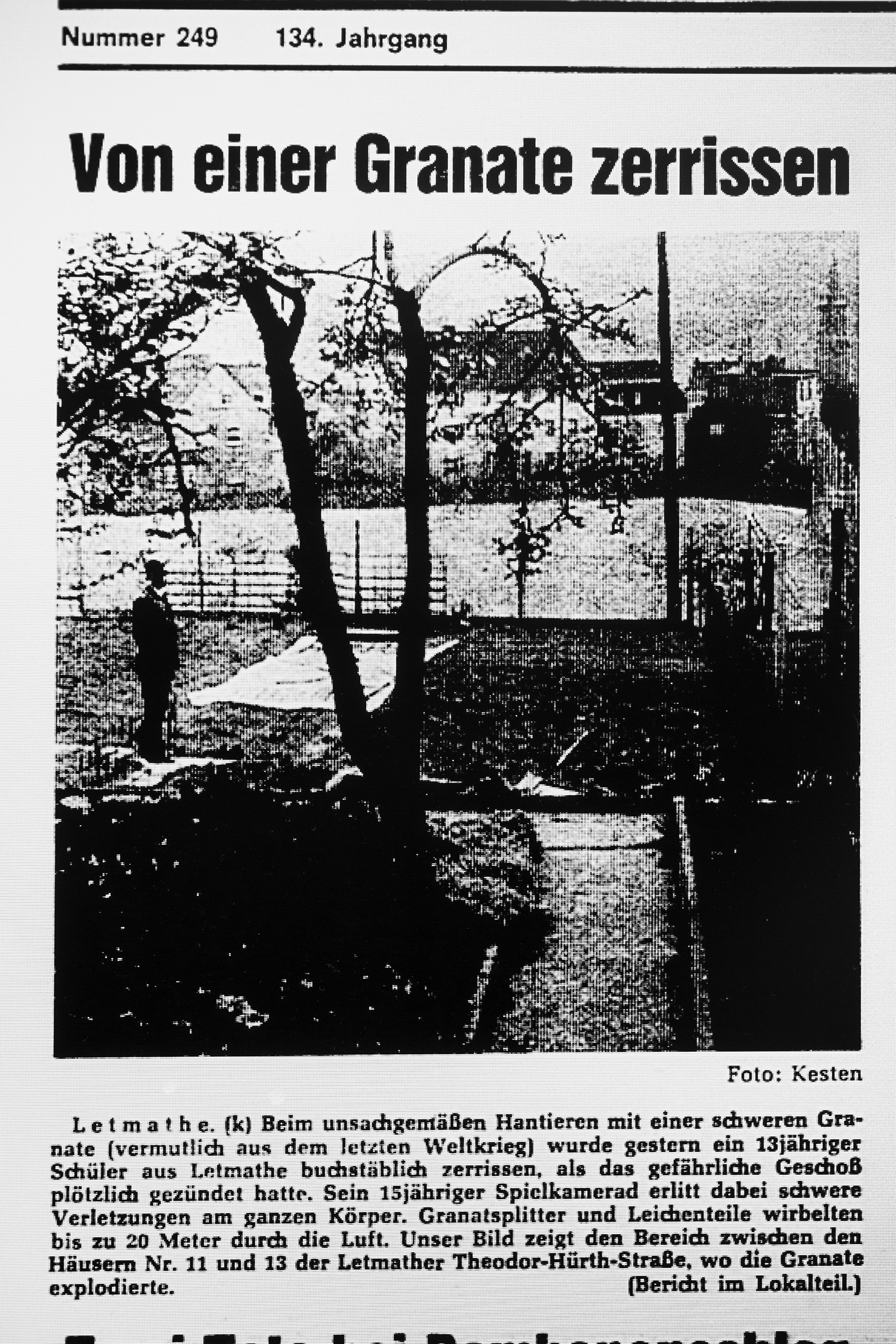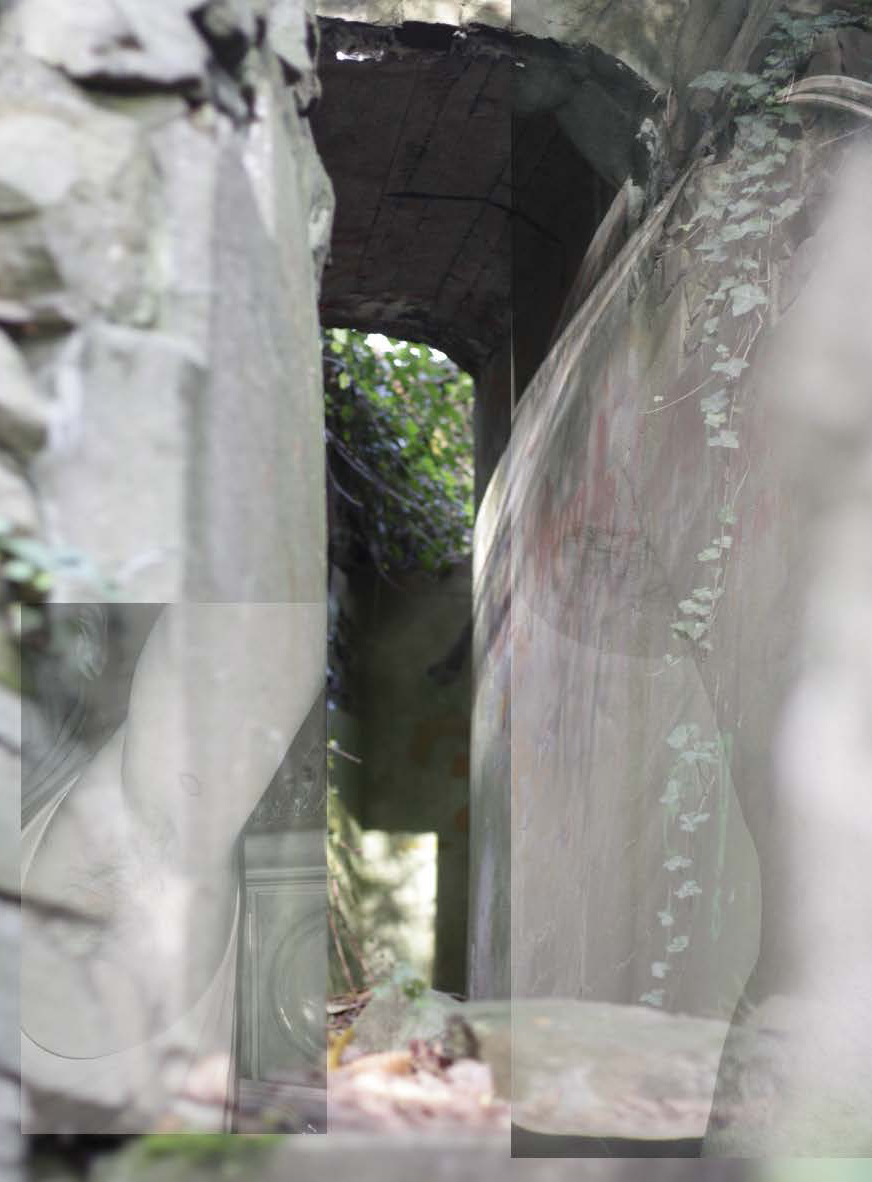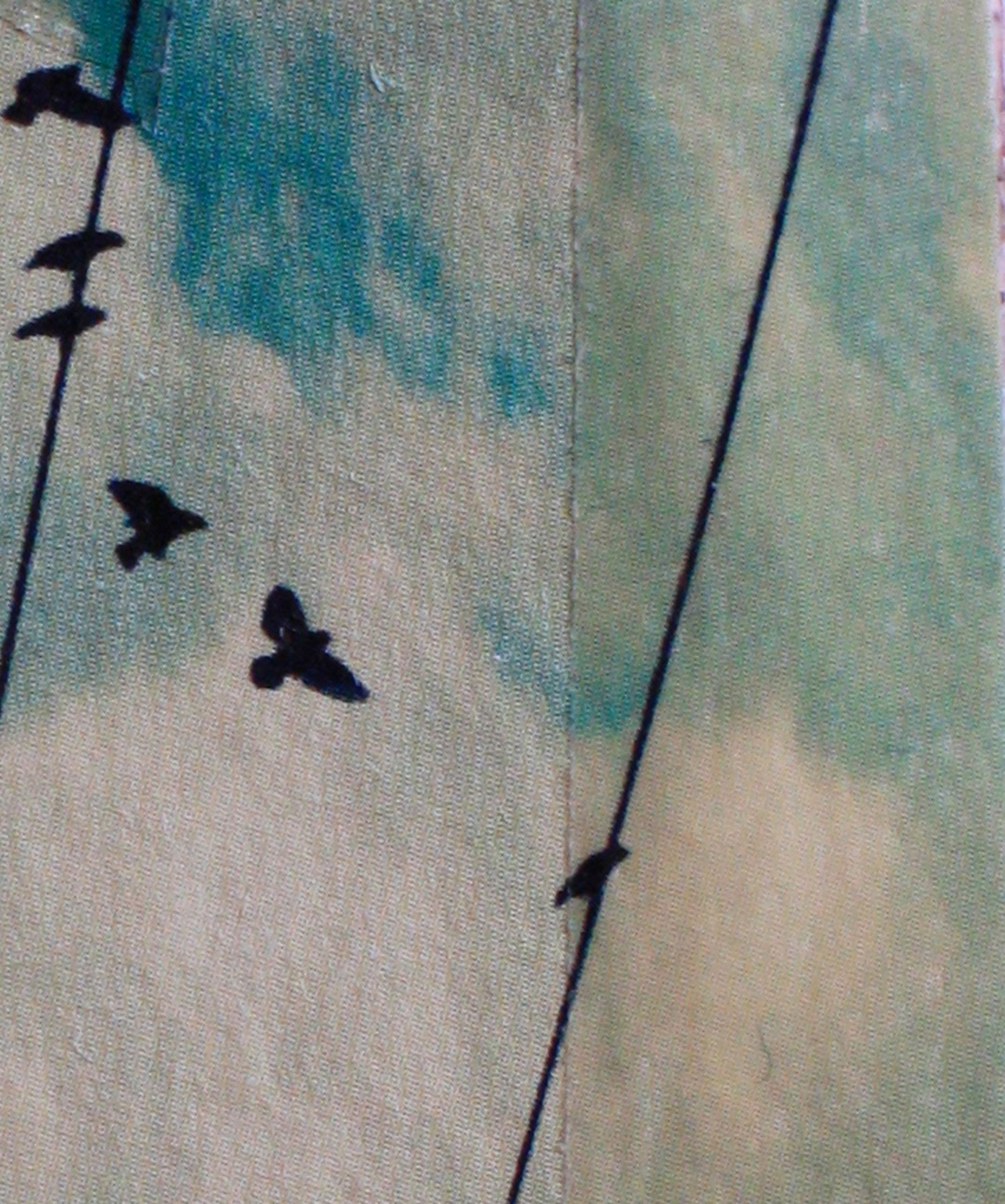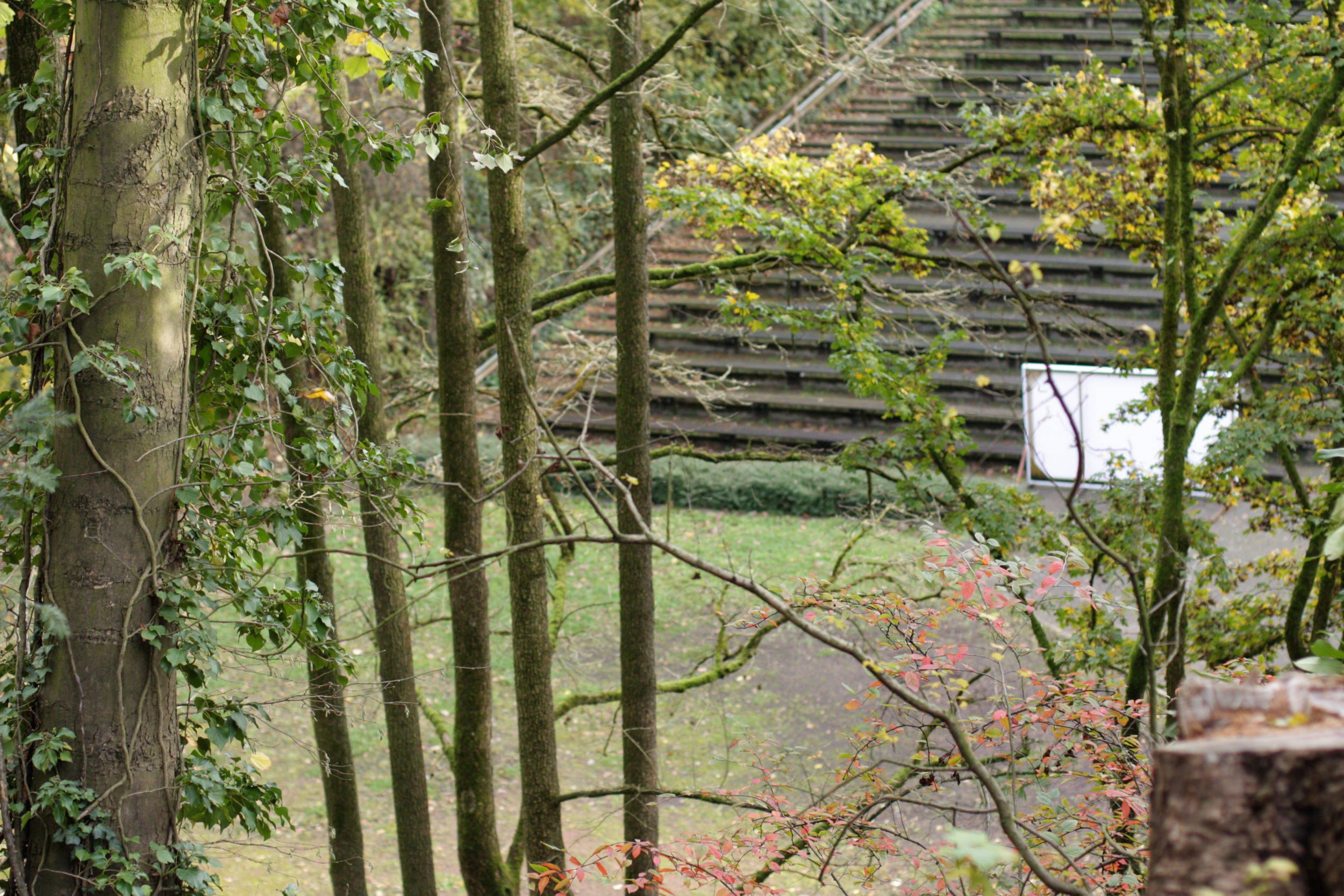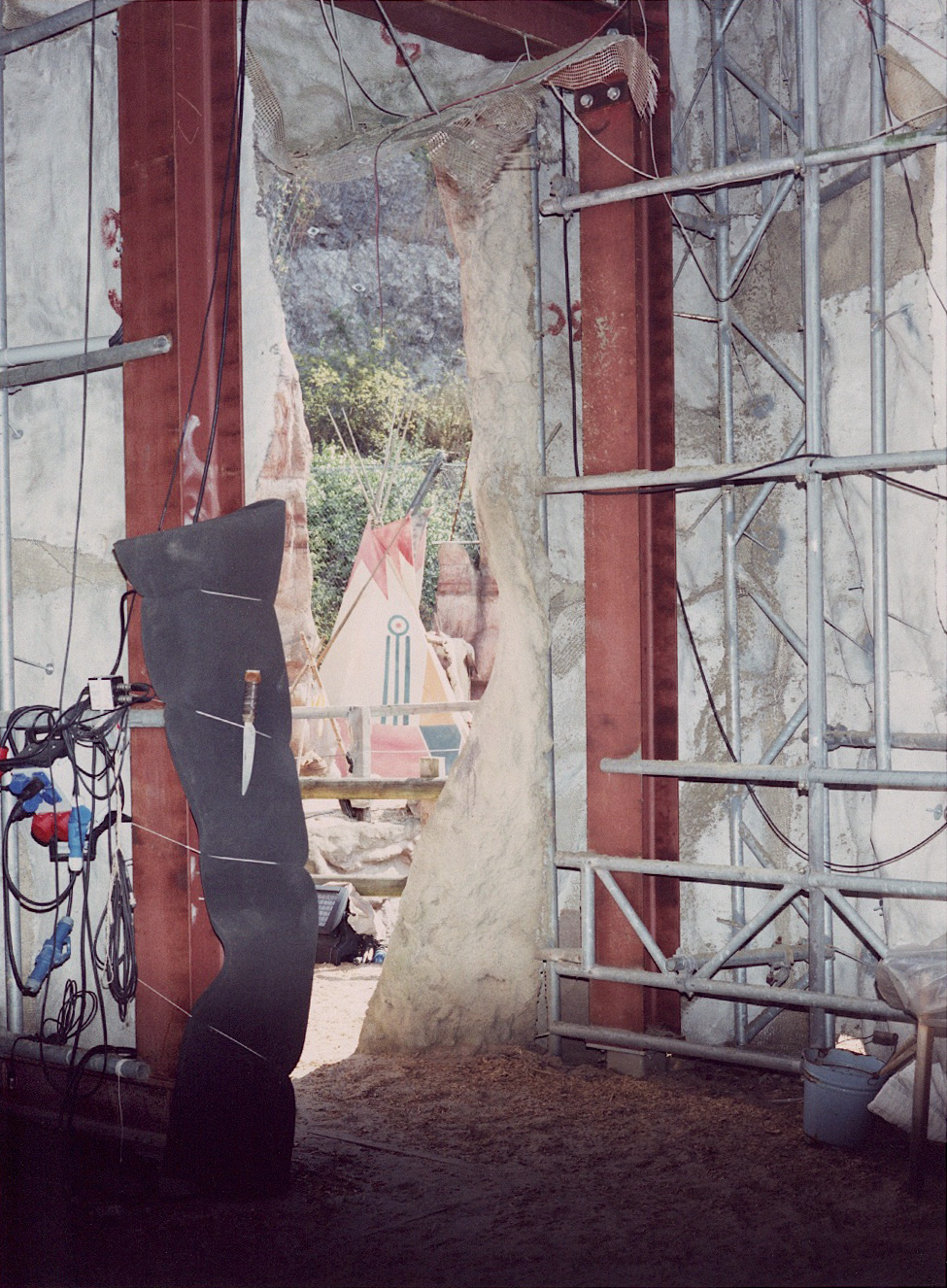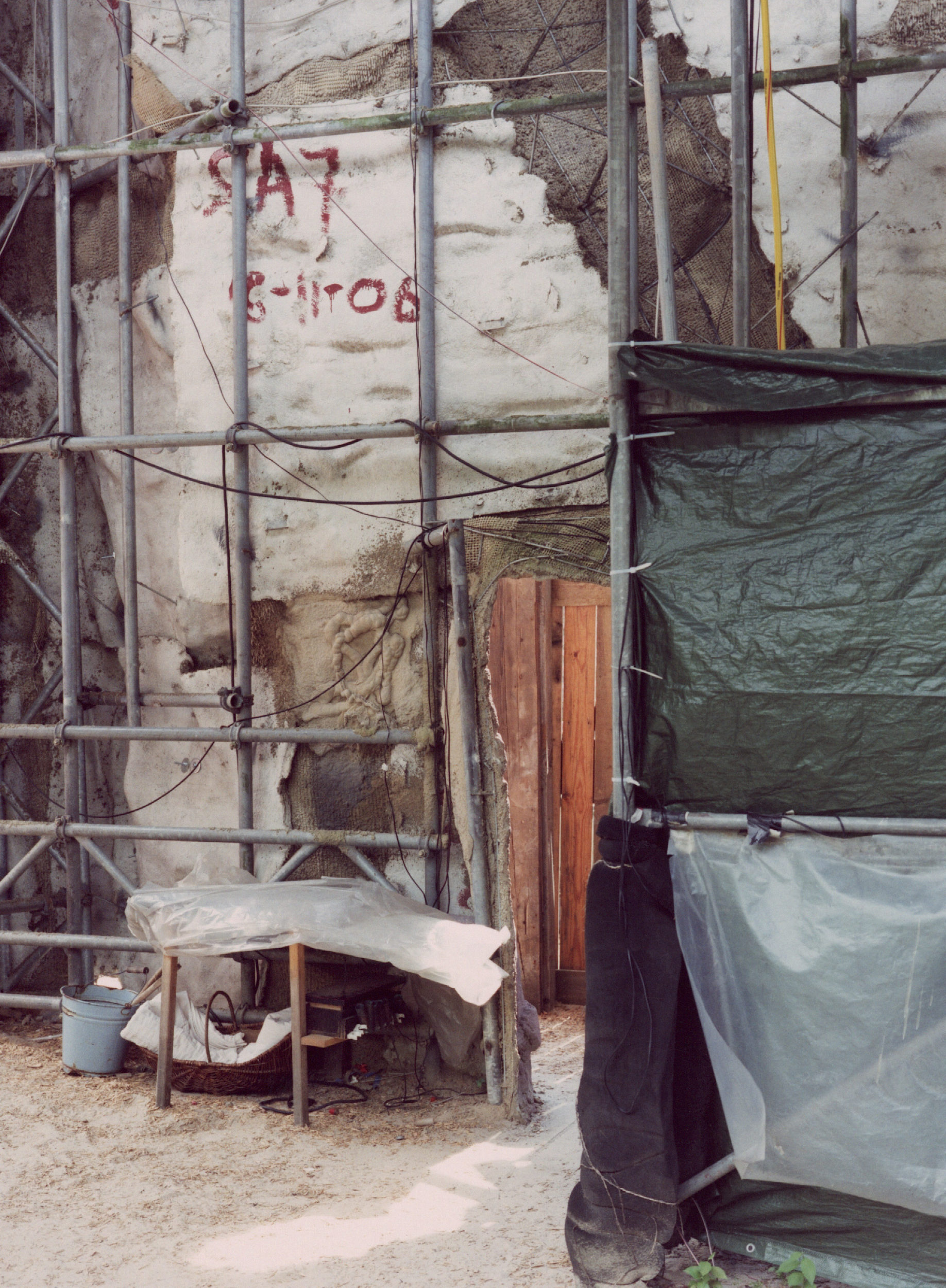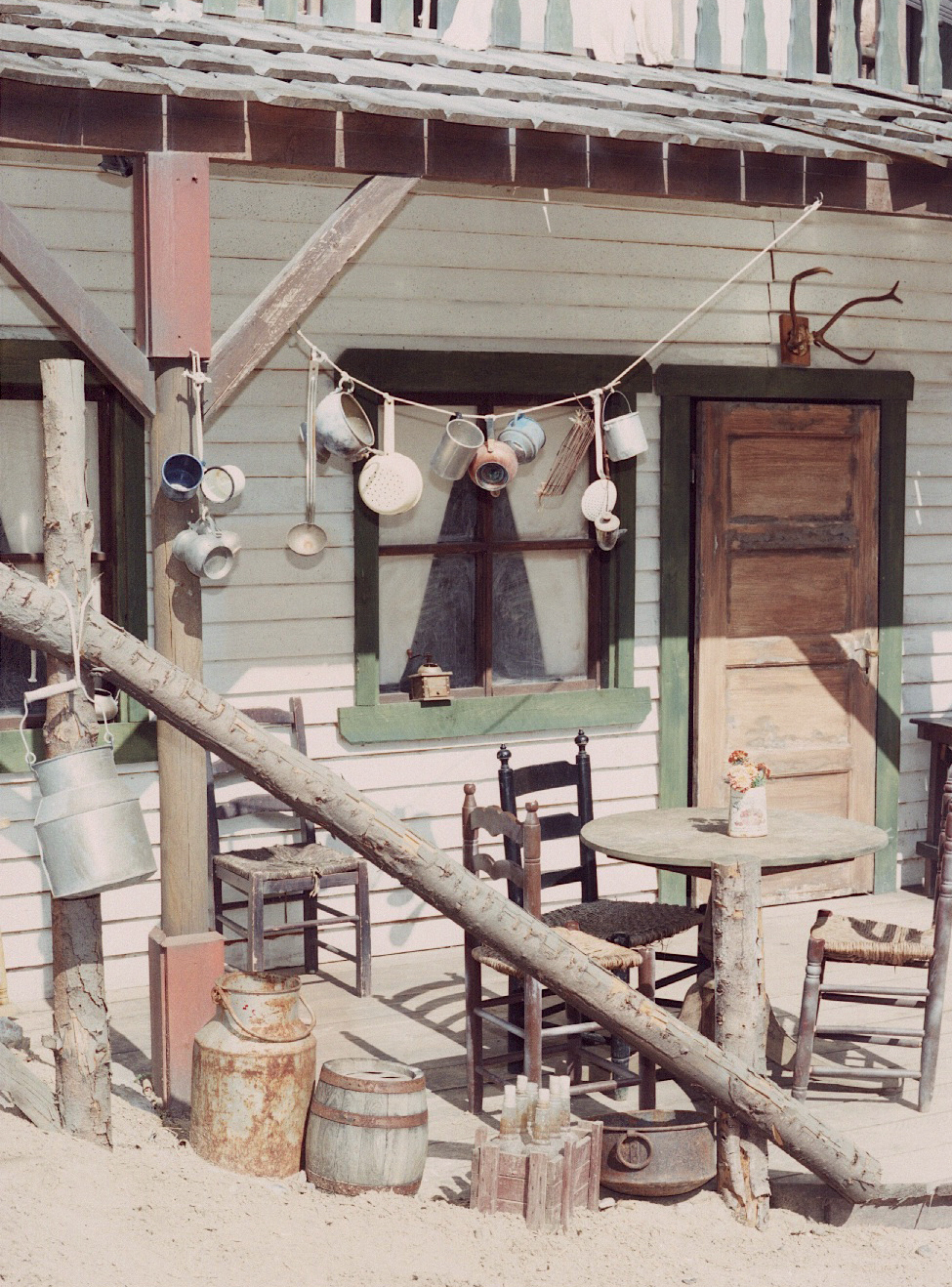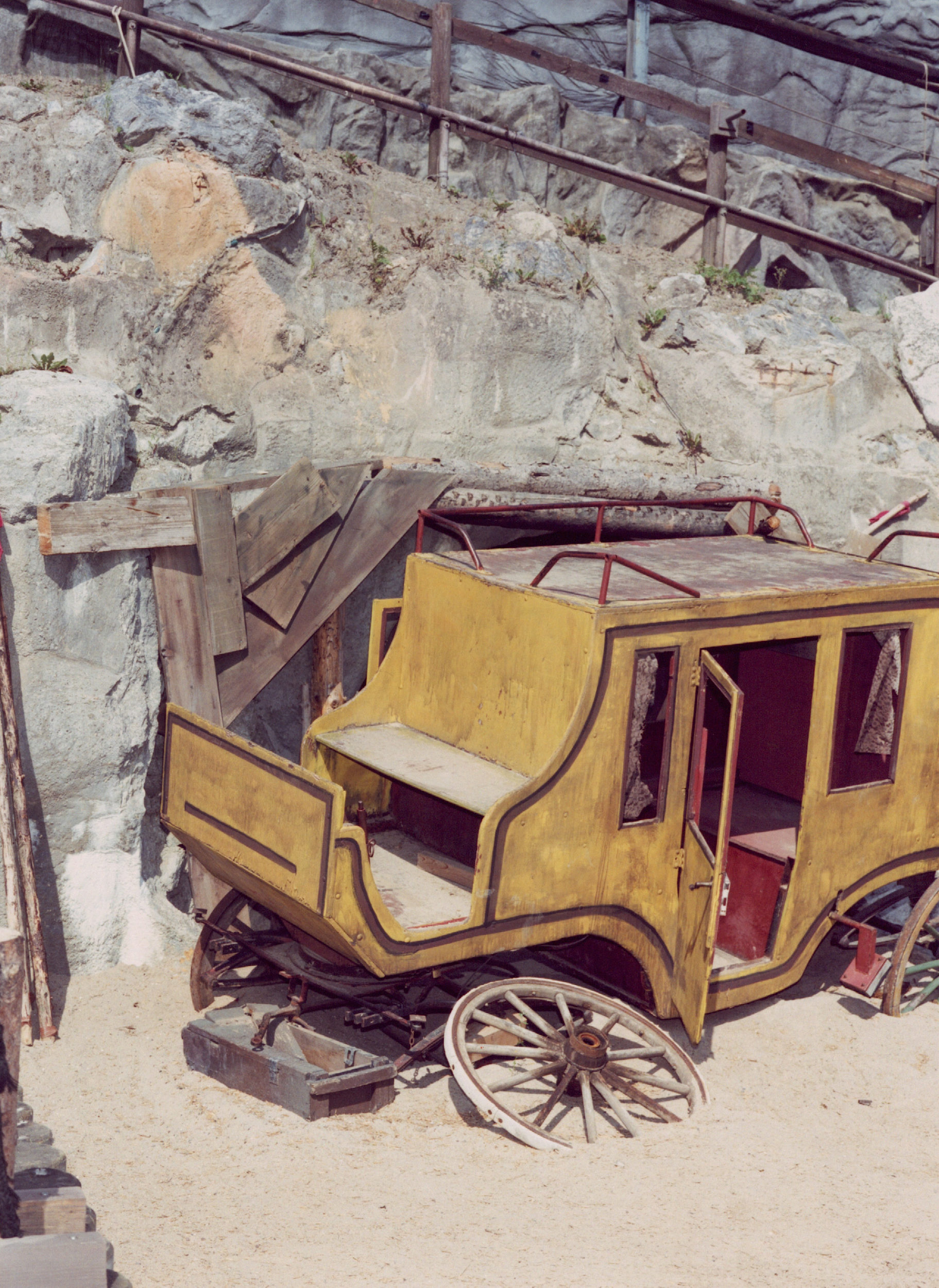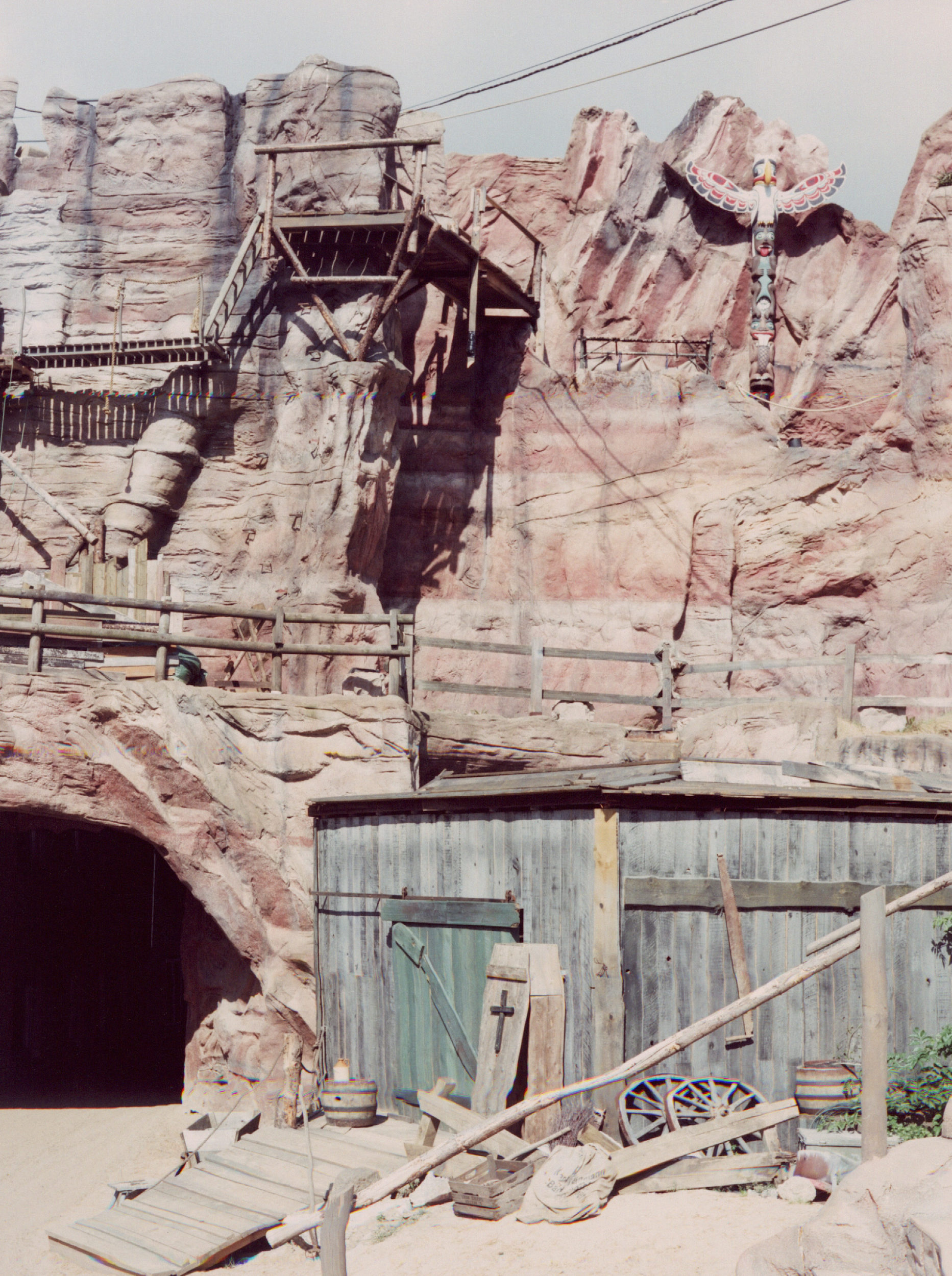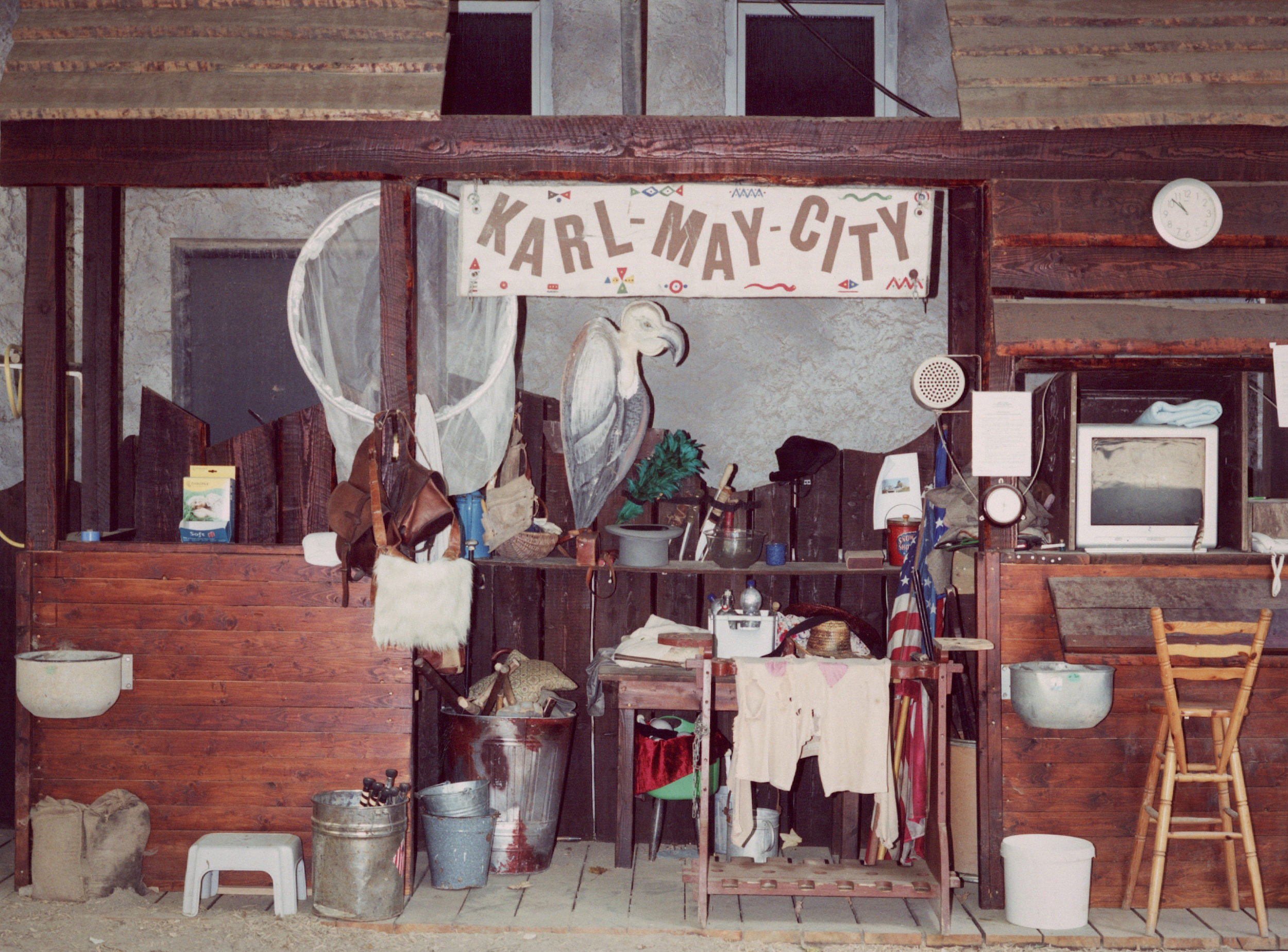Thomas Wrede
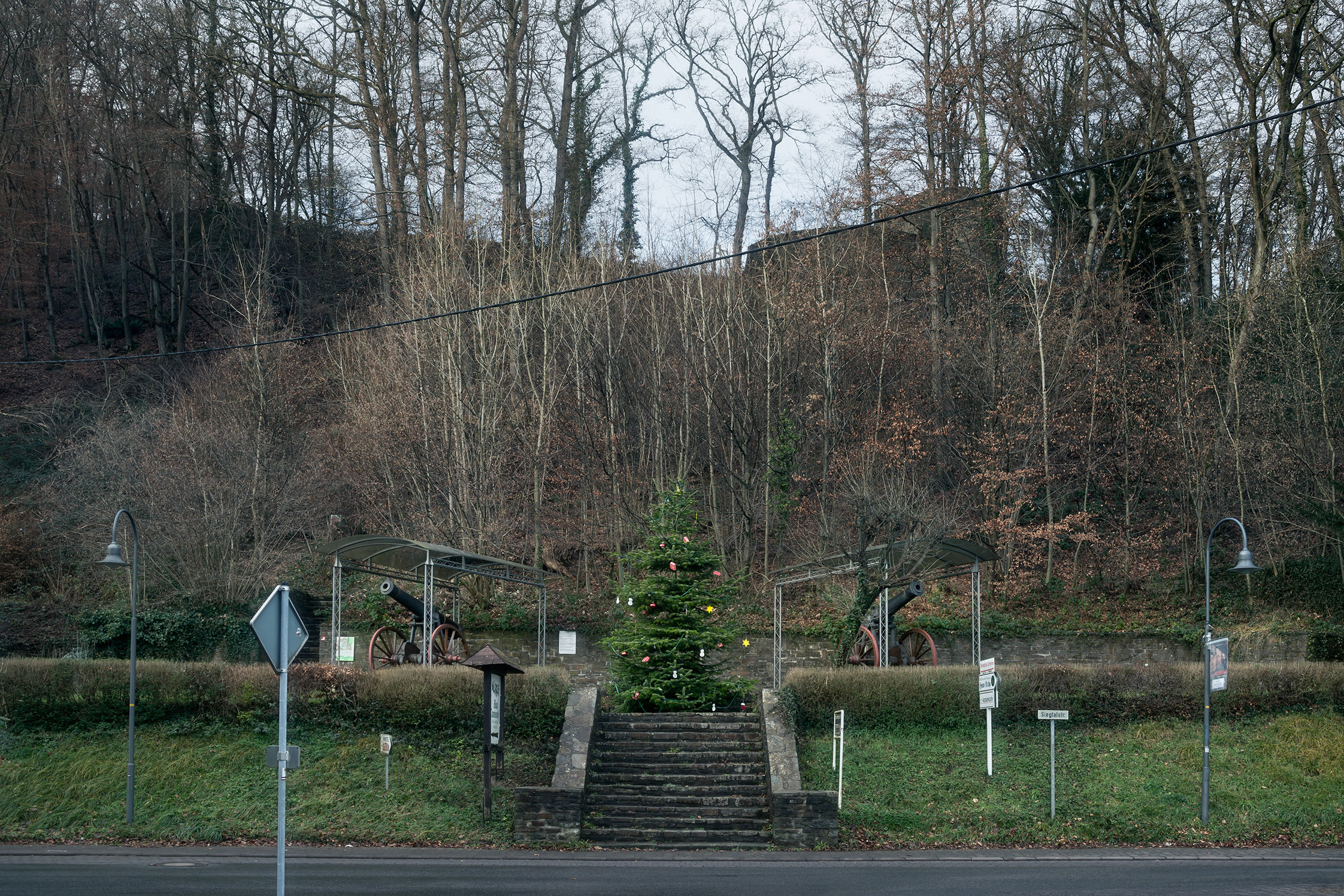
As I observed the Thingstätte Herchen with its round architecture in the middle of a wooded mountain ridge, it reminded me of a beautiful, yet tragic location from my childhood in Letmathe, Sauerland. It quickly became clear that I felt moved to juxtapose these two sites within a photographic project. I belonged to a group of adolescents between the ages of 9 and 13 who—over the years—met at a circular water hole located above our housing settlement. This small collection of water in the dark forest was the secret starting point for our adventurous games and expeditions. We felt a magical pull to our “playing ground” until this site altered the fate of one of our classmates to a mortal end. We were to learn later that this hole was in fact a World War II bomb crater and that, upon retreat, German soldiers had abandoned numerous ammunitions in the surrounding area. In the spring of 1976, a 13-year-old classmate and his friend uncovered a large winged grenade. They took their discovery home and attempted to open it. It was a sunny spring day as a deafening explosion shocked our community. My classmate was torn apart and killed; the other boy suffered serious injuries, yet survived. After more than forty years, I revisited this woodland area situated on a hillside. The allotment garden colony had expanded to within visible proximity. In the damp autumn forest, the crater had lost little of its dark and, for me, oppressive atmosphere; even its size had barely changed. Within this context, I found the inscription at the Thingstätte in Herchen, expressing the National Socialist blood and soil ideology, all the more cynical and macabre: “ BORN AS A GERMAN—LIVED AS A WARRIOR—FALLEN AS A HERO—RISEN AS A PEOPLE.” The Nazis had the text inscribed around 1934 to commemorate the fallen soldiers of World War I. The entire assemblage of the National Socialist Thingstätte with the Herchener Canons and the informational plaque from the Citizens’ Beautification Association (erected in 2014) seems to be void of any historical reflection. There is only a small plaque directly at the Thingstätte rotunda with the heading: “An unpleasant monument …” I have chosen these two locations for my photographic project with additional photographs from the surroundings and positioned them within their spatial and spiritual context. I have included photographs of the two entrances to the Thingstätte and the bomb crater, complemented with images of the current Thingstätte informational plaque and a newspaper clipping regarding the death of my classmate.
